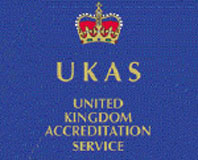Click HERE To Buy Promethazine Online ↓
 Promethazine for Motion Sickness: Pros and Cons
Promethazine for Motion Sickness: Pros and Cons
What Is Promethazine and How Does It Work?
For many travelers, the success of a trip often depends on managing feelings of nausea or dizziness. Promethazine, a medication first developed in the 1940s, quickly became a trusted companion for those prone to motion sickness. It belongs to a class of drugs known as antihistamines, which help reduce the effects of histamine in the body.
By blocking specific signals in the brain, promethazine calms the sensation of nausea and the urge to vomit. This action soothes the inner ear, where balance and motion are regulated. As the brain receives fewer confusing signals, symptoms of motion sickness—such as spinning or queasiness—can subside.
Promethazine is available in multiple forms, including tablets, syrups, and suppositories, making it adaptable for different needs and age groups. Its effectiveness and reliability have made it a mainstay for managing motion sickness, whether on a bumpy bus ride or during turbulence.
| Form | Common Uses | Onset of Action |
|---|---|---|
| Tablet | General and travel-related | 20-60 minutes |
| Syrup | Children/people unable to swallow pills | 20-60 minutes |
| Suppository | Nauseated patients/vomiting | 5-60 minutes |
Understanding Motion Sickness and Its Triggers

Imagine sitting in the backseat on a winding mountain road, when a wave of nausea and dizziness suddenly takes over. That overwhelming sensation is the result of mixed signals between your eyes, inner ear, and brain. People experience motion sickness differently, with symptoms ranging from mild discomfort to vomiting.
Triggers often include reading while traveling, rough seas, or flights with turbulence. These scenarios confuse your body's balance system, causing the classic symptoms. Recognizing these triggers is a first step toward seeking relief—sometimes with medications like promethazine.
Benefits of Using Promethazine for Motion Sickness
Travelers prone to queasiness often seek reliable relief, and promethazine has emerged as a trusted companion for smooth journeys. Acting as an antihistamine, it works by blocking the histamine receptors in the brain that trigger nausea and vomiting, offering fast-acting and long-lasting comfort for those on planes, boats, or winding car rides. Promethazine’s efficacy isn’t limited to adults; it’s commonly prescribed for children struggling with motion-induced discomfort as well.
One of the key advantages is its versatility; promethazine can be taken orally, rectally, or via injection, adapting to individual needs and preferences. Many users report that a single dose can ease symptoms for hours, helping them focus on the adventure rather than their unsettled stomach. For frequent travelers, its reliable action is a genuine game-changer.
Potential Side Effects and Drawbacks to Consider

For many travelers, promethazine offers relief during journeys, but not without certain concerns. Some users experience drowsiness, which can interfere with activities or alertness when it's needed most. In some cases, dry mouth or blurred vision may also occur, making comfort a challenge. A handful of people report confusion or restlessness, especially in older adults. Occasionally, promethazine can trigger allergic reactions or more serious side effects, so being mindful of how your body responds is crucial while using this medication.
Comparing Promethazine with Other Motion Sickness Remedies
Unlike popular over-the-counter options like dimenhydrinate and meclizine, promethazine is prescription-only and often considered when other remedies fail. While meclizine and dimenhydrinate mainly target nausea and dizziness with minimal sedation, promethazine provides a dual effect—potent anti-nausea relief and sedative properties. This can be particularly useful for travelers seeking both symptom relief and restful sleep.
However, not all travelers desire drowsiness. Non-drowsy alternatives such as ginger supplements or acupressure bands appeal to those who prefer to remain alert. Each method comes with its own balance of convenience, accessibility, and side effect profile.
| Remedy | Prescription Needed | Main Effects | Common Side Effects |
|---|---|---|---|
| Promethazine | Yes | Anti-nausea, sedative | Drowsiness, dry mouth |
| Meclizine | No | Anti-nausea, mild sedation | Dizziness, dry mouth |
| Dimenhydrinate | No | Anti-nausea, sedation | Drowsiness, blurred vision |
| Ginger | No | Anti-nausea (natural) | Mild stomach upset |
When to Avoid Promethazine and Seek Alternatives
Promethazine isn’t suitable for everyone, and knowing when to steer clear can make a big difference in safety and comfort. For children under two years of age, this medication raises serious risks, including potentially fatal respiratory depression. People with certain health issues—like severe breathing problems, glaucoma, or liver disease—should also avoid promethazine, as it can worsen these conditions. Additionally, elderly adults can be more vulnerable to its sedating effects and complications. If you experience allergies to promethazine or related medications, it’s crucial to tell your healthcare provider. In these cases, exploring non-medication strategies or different remedies becomes the safer route.





















